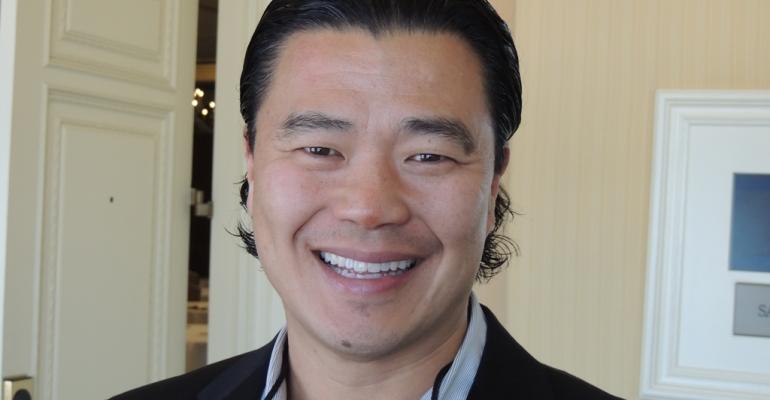LOS ANGELES – Charles Kim winces when he spots certain things at car dealerships, dubious stuff he considers as holdovers from another era.
He tells of coming across a big gong on the sales floor of a Cadillac dealership. Way back when, it was not uncommon for dealers to bang a gong each time someone bought a car.
But today, that attention-getting practice seems anachronistic, especially at a store representing a luxury brand that’s trying to revamp its image
“Do you think a Cadillac customer wants that gong experience?” Kim, Kia Motor America’s director-retail development, says at an automotive conference here put on by Thought Leadership Summits.
During his presentation, entitled “Real Retail Change is Coming…and Fast,” he shows a photo of several severed neckties, their lower ends scissored off, tacked to a dealership wall.
That stems from a quaint practice of dealership sales staffers severing the tie of a rookie when he sold his first car. It was something of rite of passage. To Kim, that was then, this is now.
He questions the wisdom of such a wall trophy display “in plain view” at a dealership. His takeaway: It doesn’t look professional. Another takeaway of a different kind: If you’re a rookie who thinks today is the day you’ll sell your first car, wear a cheap tie to work.
Then there is the slide in Kim’s presentation showing a publicly displayed dealership tote board showing a running tally of who sold how many vehicles. “Nothing screams more to customers that they are dealing with a sales-numbers organization,” Kim says.
He cites the gong, truncated ties and open-view sales board as out of place in modern dealerships, particularly as auto-retailing changes rapidly with an enhanced emphasis on professionalism and customer treatment.
“Technological, demographic and competitive factors in the marketplace today are driving real change,” he says of dealerships. “You will see more retail change in the next 10 years than in the past 50.”
That’s why automakers and dealers “need to prepare for and adapt to this inevitable future, and work collaboratively to meet future marketplace demands.”
That includes using technology to speed up the car-selling process. Yet, despite the advent of customer-relationship management software and other technologies, many dealerships still use a burdensome 10-step “road-to-the-sale” process that has “largely remained fundamentally the same,” Kim says.
To some extent he speaks from personal experience in calling for auto-retailing reforms. “I bought three cars in eight years. One word: ‘Disappointing.’”
When he submitted a lead to a Honda dealership, the response time was “underwhelming.” Then a Honda Insight test drive got off to an odd start.
“The salesman had me sit in the front passenger seat,” Kim recalls. “He got behind the wheel, drove 200 yards and then had us switch. I thought, ‘I could have driven from the start.’ But he did it that way because that was what he was taught.”
Kim asked the salesman Honda Insight-Toyota Prius comparison questions. “He said, ‘I don’t really know much about the Prius.’”
Later, the dealership sales manager told Kim he should buy a Honda over a Toyota because, “I guarantee our gas pedal won’t stick.” At the time, Toyota was in the midst of a recall for potential throttle malfunctions.
Of course, many dealers “get” it, making right moves, often after learning from their mistakes.
As a dealership salesman, Dishon Putz was fixated on selling cars, no matter what.
“I’d skip all the processes to get to selling cars,” Putz, now general manager of Kelley Buick GMC in Florida, recalls at the Thought Leadership Summits conference.
He reevaluated what he was doing and switched his emphasis. “I decided I’d be the best on product knowledge, and I’d give customers the VIP treatment. In doing that, I didn’t care how many cars I sold.”
Ironically, Putz sold a lot more cars. “Referrals and appointments spread like wildfire. I was No.1 of 30 salespeople. It became a gold mine.”
Dealers seeking to improve their organizations should look at them through the eyes of customers, Kim says. “For a critical perspective, experience your dealership firsthand like regular folks do. Don’t be in denial.”
At Kia, he leads a team responsible for franchise activities at the South Korean automaker’s 771 U.S. dealerships. He began his career at Ford where he held positions in various fields, including fixed operations and sales.
In 2004, he joined a Maryland-based dealer group, serving as a manager at Chevrolet-Cadillac, Lexus and Ford stores. He later worked as a consultant. He joined Kia in 2015.
Automakers play a big role in how well their dealer bodies do, says Fran O’Hagan, president and CEO of Pied Piper Management, a consulting firm that mystery shops dealers to determine by-brand effectiveness.
“When we’ve metrically seen a brand’s dealers really changed for the better, it’s because there had been someone at the automaker saying, ‘We need to pay attention to how our dealers are selling,’” O’Hagan tells WardsAuto. “The evidence of that is overwhelming.”





